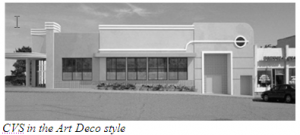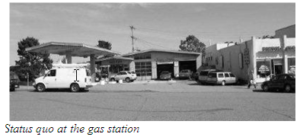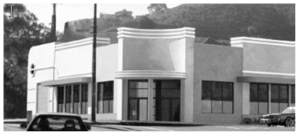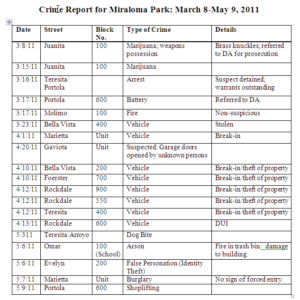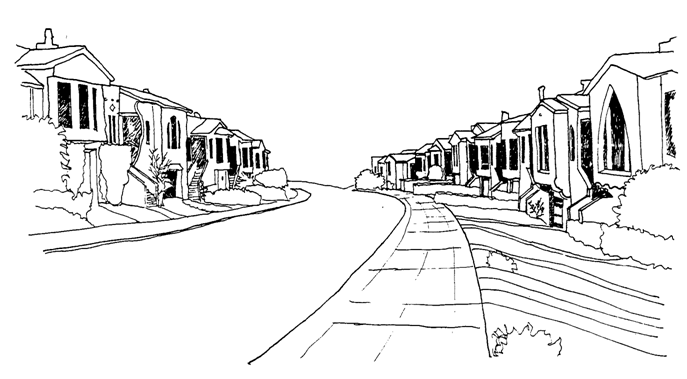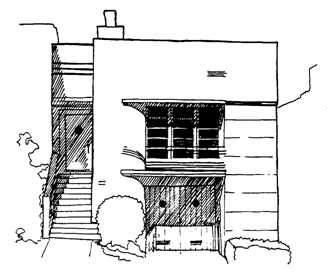News & Events
Miraloma Life: June 2011
- Bad Decisions: Supervisors Accept 2004-9 Housing Element EIR and Recommend Adoption of Housing Element
- Update on the New CVS Drugstore
- MPIC Spring Social and Board Election on June 16
- About Parking: What’s Up With That?
- Neighbor Alert: Arson
- From the Legal Files: Why Arbitration is Fundamentally Unfair
- Summary of Minutes of MPIC Board Meeting of May 5, 2011
- Miraloma Park Residential Design Guidelines (MPRDG)
Bad Decisions: Supervisors Accept 2004-9 Housing Element EIR and Recommend Adoption of
Housing Element
by Dan Liberthson
In the April and May issues of the Miraloma Life, articles about the Housing Element (HE) described in detail how the Planning Department and Commission, after a Court mandated environmental impact review (EIR) of Draft 2 of the HE, illegally made significant changes in the wording of the document, changes not analyzed by the EIR, and thus disregarded the Court’s judgment. Draft 3 of the HE includes changed language that eliminates density limits from RH-1 and RH-2 neighborhoods in pursuit of the goal of equalizing housing density throughout the City (“density equity”).
In addition to setting the stage for abolishing single-family zoning, Draft 3 opens much of the City along “transit corridors” (any streets with buses or light rail running on them) to high-density development projects with limited parking. It also drastically reduces current open space and backyard size requirements (threatening residents’ light and view), facilitates building to the 40-foot height limit throughout most existing lots in these neighborhoods, provides for legalization and promotion of illegal units and subdivision of single-family units in R1- zoned neighborhoods, and in the interests of “fairness,” gives ‘community’ interests outside R-1/R-2 neighborhoods a say in what should or should not be built in these neighborhoods, interests that could include developers and special interest groups.
Neighborhood organizations representing R-1 and R-2 neighborhoods had accepted HE Draft 2! But although strong arguments in favor of Draft 2 and against accepting the EIR as valid for Draft 3 were made at the Planning Commission and the Board of Supervisors appeal hearings, these arguments were rejected. On May 10, by a vote of eight to three, they affirmed the Planning Commission’s certification of the EIR. Only Supervisors Elsbernd, Chu, and Farrell supported the neighborhoods’ position. Supervisors Avalos, Campos, Cohen, Chiu, Farrell, Mar, Mirkarimi, Kim, and Wiener voted to uphold the EIR, in effect blessing the neighborhood-unfriendly Draft 3 document created after the EIR had been completed. This outcome can be compared with making major unreviewed and un-agreed changes in a home remodeling design after obtaining a permit!
On May 16, the Board’s Land Use and Economic Development Committee—Supervisors Cohen, Mar, and Wiener—unanimously voted to send HE Draft 3 to the full Board with a recommendation for approval. Sadly, at the latter hearing Supervisor Malia Cohen implied that the absence at the hearing of large numbers of Asians, African Americans, and Latinos opposed to the Draft 3 indicated that those who did attend to oppose it were a select, non-ethnically diverse minority. Supervisor Cohen is evidently unfamiliar with the broad ethnic and economic diversity of neighborhoods West of Twin Peaks. Many readers will find in her comments a whiff of the well-worn “NIMBY” (not-in-my-back-yard) slur so often used to denigrate single-family-home neighborhoods’ efforts to protect their neighborhood character.
Moreover, in our many years of attending and testifying at public agency hearings, this was the first instance we’ve encountered of hearsay testimony being admitted: both Supervisor Cohen and Planning Department staff stated for the record that many residents of various ethnicities supported Draft 3, and no one questioned this claim. But why weren’t these residents at the hearing, what specifically was the nature of their testimony, and how much did they really know about this document? Planning Staff stated that only 30 words were changed from HE Draft 2 to Draft 3, and that the in fact substantive changes in the new document were minor. But a word count is not a useful gauge of meaning—changing 30 or even 3 key words in the US constitution could transform this country from democracy to dictatorship.
The new language degrades neighborhood self-determination by allowing “community stakeholders”—e.g., developers and residents of other neighborhoods—to participate in neighborhood building project decision-making. It’s only a “policy document” the Department reassures us, and all projects will still need neighborhood approval. But if future zoning changes are not contemplated, why change City policy to accommodate them? The Land Use and Economic Development Committee members asked not one question of the Department about why these 30 words were changed and what the changes meant. But every neighborhood advocate present knew what they meant, as described above. The real story was being disingenuously withheld.
What is the real story? Draft 3 of the HE sells out the City’s character for money in the form of promises of grants via the Association of Bay Area Governments—ABAG, a regional organization in charge of determining quotas for new housing. These grants reward any municipality that goes further than required by State law in building new homes: in the case of HE Draft 3, twice as many homes (about 60,000) as the minimum ABAG asks of San Francisco (about 30,000). In seizing this bait, SF’s Planning Department and its supporters have established a policy to densify a city that is already denser than any other major US city except New York. The reward grants may help grow the Planning Department and supplement the City budget, but this is a bad deal for SF’s single-family neighborhoods, and the compliant Supervisors have failed to exercise their power to protect the City and its residents from planned degradation. They have instead supported a version of the HE that was not environmentally reviewed and caters to developers’ and ideologues’ densifying interests.
We thank Supervisors Elsbernd, Chu, and Farrell for supporting neighborhood character conservation in San Francisco. We and other San Franciscans will not forget you and the courage that you demonstrated in opposing the money grab and insisting on a fair and legal process. And we will remember, particularly when they next stand for public office, the majority of the Supervisors who turned their backs on due process and sold out the unique and irreplaceable characters of San Francisco’s residential neighborhoods.
Update on the New CVS Drugstore
by Gary Noguera
On April 28, the SF Planning Commissioners gave conditional approval to the demolition of Nad’s Miraloma Gas on the corner of Portola and Fowler. In its place will be a brand new 7000 square foot building that will house a CVS drugstore. As most of you know, the MPIC ha s be en working with CVS to ensure that the new building will match the Art Deco/Spanish style of the homes in Miraloma Park. We were very excited that what started out as a “glass box” became a Deco-style building on the theme of Tower Market. As you will notice in the photo below, the building will have a rounded entry and Deco lines on the façade, and is a perfect match for the neighborhood.
Unfortunately, one of the commissioners at the hearing called the design “god awful”. To say the least, we were very surprised and disappointed. The MPIC hosted at least five meetings open to the all residents, where presentations were made about the design. Everyone at the meetings was welcome to give feedback, and some minor changes were made based on neighbors’ comments. Not a single person objected to the design, and many were impressed by it.
The Commissioners sent the matter back to the Planning Department to get the design changed to something more modern. We have asked for help from Supervisor Sean Elsbernd, who totally supports our position that the design should not be changed, and we have written to the Department and the Commissioners in support of our position.
The Commissioners agreed to limit the hours of operation for the CVS store to between 7:00 am and 10:00 pm. CVS has agreed not to sell alcohol at the store, a concession the MPIC Board worked hard to accomplish.
The Commission asked CVS to re-design the building to something more “modern” in style, and submit this modified design to the Planning Department. Then CVS will present the new design to the MPIC Board, and we plan to have a town-hall meeting to see if people prefer the Art Deco or the “modern” design. We will continue to provide updates in future issues of the Miraloma Life.
MPIC Spring Social and Board Election on June 16
The MPIC’s annual Spring Social and Election will be held from 7:15 to 8:45 pm on June 16. Supervisor Elsbernd and Police Captain Cassanego have been invited, and many of the MPIC Board members will attend. Wine, cheese, fruit, desserts, and nonalcoholic beverages will be supplied by the MPIC. Please come and meet your neighbors, officials, and Board, and enjoy tasty treats and good company. All Miraloma Park residents are invited, and MPIC members in good standing (2011 dues paid as of May 16) may vote for Directors and Officers on the slate, which follows.
Directors: Karen Breslin, Shannon Chu, Gary Noguera, Kathy Rawlins
Officer: Sergeant-At-Arms: Joanne Whitney
About Parking: What’s Up With That?
by Captain Louis Cassanego, Ingleside Station
I was notified by the Municipal Transportation Agency (MTA) that the Department of Parking and Traffic will be stepping up sidewalk violation enforcement, and was asked to inform the community of the plan. Parking is in such high demand that parking across the sidewalk, even in front of your own house, is common. However, this is a violation, because cars parked across or on the sidewalk block pedestrians’ access, especially those who have limited mobility. Please inform your friends and neighbors.
A tip from MPIC Board: Don’t get parking tickets because you don’t have change for the meter. MTA parking meter cards are a convenient way to pay for meters. You can buy them at stores across the city and on-line at the MTA website: http://www.sfmta.com/cms/pmeter/ parkingcard.htm.
Crime Report for Miraloma Park: March 8-May 9, 2011
Neighbor Alert: Arson
On May 7, 2011 at approximately 12:37 AM, an arsonist set fire to an outdoor refuse bin at Miraloma Elementary School causing damage to the school building. Fortunately, the SFFD was able to extinguish the fire before major damage resulted.
Please call police if you see or hear or see anyone in the school or Miraloma Field/Playground properties late at night: 553-0123 for loitering, 911 for suspected crime in progress; if in doubt, call 911. (The Field and Playground close at 10:00 PM.)
If you observed suspicious activity that may be related to this crime, please contact the SFPD at 553-0123. Even small details can be helpful in identifying suspects. The children, faculty, administration, and parents of Miraloma Elementary School have done a tremendous job to create a school of which we all can be proud. Please help to support their efforts. Thank you for your help! — Board of Directors Safety Committee, Miraloma Park Improvement Club
From the Legal Files: Why Arbitration is Fundamentally Unfair
by Mary Catherine Wiederhold, Esq.
I believe that arbitration can be unfair in deciding real estate issues. A recent case from Glendale is especially illustrative. Current law prohibits a court from reviewing an arbitrator’s award. This is because California has a “strong public policy in favor of arbitration as a speedy and relatively inexpensive means of dispute resolution.”
A case will be reviewed by the appellate court, however, if the arbitration procedures interfere with a party’s right to a fair hearing. Recently an appellate court held that an arbitrator improperly excluded one party’s right to have a corporate officer sit in an arbitration hearing. The secretary for a corporation was not allowed to sit with the corporation’s attorney at counsel’s table.
The corporate owner of an assembly hall negotiated with a caterer. After negotiations concluded the caterer spent approximately $300,000 to remodel the hall. When the caterer held the first event, Glendale police officers informed the caterer that the hall could not be operated after 12:30 a.m. The caterer then learned that it could not operate using the hall’s liquor license. It sued the corporate owners of the hall and the hall’s president individually. All parties agreed to submit to arbitration.
At arbitration, the arbitrator allowed the president of the corporation to testify but refused to allow the secretary for the hall to stay in the room where the arbitration was being held. The secretary had been in negotiations with the caterer. The secretary would have assisted the attorney as to exactly what oral representations had been made regarding the time that the hall could stay open and any restrictions on the hall’s liquor license. However, only the president was allowed in the arbitration and to sit at the attorney’s table.
The hall’s president was not present during the approximate one-year-long lease negotiations. The president testified that although he signed the lease with the caterer, he was not involved in drafting the lease or the lease addenda. The president failed to recall any conversations with the caterer about the liquor license or the operation of the hall.
The appellate court held that the arbitrator’s conduct unfairly prejudiced the hall by not allowing the secretary to sit at the attorney’s table and assist the attorney in asking questions of the caterer. The appellate court agreed with the hall and overturned an award to the caterer of approximately $1,250,000. The court sent the case back to the same arbitrator for further proceedings. One legal commentator stated that if this matter had started in superior court and the appellate court sent the matter back, the parties would be able to object to having the same judge hear their matter again. However, this is not an option with arbitration. Consult an attorney before you agree to arbitration.
Summary of Minutes of MPIC Board Meeting of May 5, 2011
by Joanne Whitney and Dan Liberthson
President Karen Breslin presided. As there was no quorum, the minutes of the March Board meeting were corrected but approval was postponed until the June meeting. An email motion to send a letter to the Planning Department supporting CVS’s design for their planned Portola store was unanimously approved.
Treasurer (T Sauvain): Current MPIC net worth is $27,127.94 (about 4,000 lower than figure for March because moneys owed, e.g., deposits on rentals, were inadvertently left out of the March figure). Printing and distribution of the Miraloma Life, at $2,838.73, was the biggest expense and Clubhouse rentals ($1,397.50), newsletter ad fees ($420), and dues ($150) provided the income.
Membership Committee (R Gee): The MPIC now has 582 members A meeting will be scheduled to work on a new membership appeal by mail.
Zoning and Planning (ZAP; C Mettling-Davis): The Planning Commission asked CVS to revise the design for their planned Portola store, calling it old fashioned and “god-awful.” ZAP to write a letter in support of the design, to which the Board had input. The ZAP Committee and full Board decided that the ZAP committee’s duty was to interpret the Miraloma Park Residential Design Guidelines (MPRDG) and not to act as mediators between disagreeing parties, or between disagreeing parties and the Planning Department and Commission. ZAP will not meet with neighbors to hash out issues but will attend pre-application meetings and explain the MPRDG when necessary. D Liberthson explained critical aspects of the Housing Element and asked Board members to attend the May 10 Board of Supervisors hearing on the environmental impact report (EIR). Is this the beginning of the end of R1 and R2 zoning in SF and a change in the standard of living of the R1/R2 neighborhoods? Events: Shannon Chu to chair Events Committee with emphasis on events for children and families.
Community Organizations: Coalition for SF Neighborhoods (CSFN; G Noguera): Discussed Housing Element and opposition to new community center building on Presidio near car barn. West of Twin Peaks Central Council (WOTPCC; K Breslin): Discussed Housing Element; Board of Supervisors President David Chiu present. Request for dog washing business permit in Stern Grove opposed. Ingleside Police Community Advisory Board (CAB; J Whitney): City-wide meeting of all ten police CABs to be held on May 10. New police chief will preside and report on safety posters, Youth Forum, and safety in Crocker Amazon Park.
Clubhouse Maintenance (G Issacson): C Mettling Davis will be point person for the second quarter, with Steve Davis temporary rental agent. Mettling-Davis continues investigating how to make the outside stairs safe. Contract for maintaining the grounds at the Clubhouse and caring for the native plant garden given to Casey Allen, President of California Native Plant Society. Rec & Park at request of PUC (which owns the Clubhouse land) cleared a large fallen tree and its stump and left new chips; trunk was cut into rounds placed along the perimeter of the parking lot. Discussion of removal of eucalyptus; PUC arborist to inspect trees. K Wood made point that she would not approve of any live tree being removed unless it was a safety hazard. Some renters are leaving too much garbage; how to handle excess discussed. P Renteria noted that someone left outside water running. D Liberthson installed locking device on external faucet to prevent water theft. Cleaning service will now come monthly; K Rawlins will inform C Mettling-Davis about problems they should check. G Issacson to check on which lightbulbs are best for Clubhouse in terms of color produced, price, energy consumed. June 4, 9-12 will be a workday: all Board members and any interested party can work on the MPIC building and grounds. All members of the Maintenance Committee will take turns checking on the condition of Clubhouse after rentals.
Newsletter (D Liberthson): Chris Long, an East-Bay student and freelance graphics designer, worked with Phil Laird to do layout on May issue of Miraloma Life; Chris will take over that function for $100 per issue.
New Business: R Gee will spearhead tree planting for Miraloma Park in conjunction with Friends of the Urban Forest. J Whitney and G Issacson will be at Clubhouse from 7:30 to 8 pm on May 19 to accept nominations from the floor from members in good standing.
Miraloma Park Residential Design Guidelines (MPRDG)
To make Miraloma Park home-owners more aware of our MPRDG, we plan to reprint most of the document in the Miraloma Life, as space permits. The complete MPRDG are on the MPIC website, miralomapark.org. The cover and front matter appear below, with drawings of homes and streetscapes typical of older Miraloma areas.
MIRALOMA PARK RESIDENTIAL DESIGN GUIDELINES
October 1999
Miraloma Park Improvement Club
350 O’Shaughnessy Boulevard
San Francisco CA 94127
Acknowledgments
These guidelines were written by Miraloma Park Improvement Club and reviewed by the San Francisco Department of City Planning. The MPIC wishes to acknowledge the contributions of D. Scott Brasfield, AIA, who reviewed portions of the document and contributed the section on “The Design Process.” These guidelines are dedicated to the memory of Bruce Flynn, architect and friend of Miraloma Park and all San Francisco, who reviewed portions of the text and suggested correct architectural terminology.
Prefatory Note
Unless otherwise indicated, sections in quotation marks are quoted verbatim from the Residential Design Guidelines of the City of San Francisco (1989).
SECTION 1 – MIRALOMA PARK DESIGN GUIDELINES BACKGROUND
INTRODUCTION
In recent years the premium on residential property in San Francisco has encouraged development that has been unsympathetic to the character of the existing built environment. While the Planning Code provides general limits on the development of lots, the application of these limits may conflict with neighborhood character.
The renovation of a residence is a major commitment of time, effort, and money. The reasons for renovation vary: some people renovate as an investment, some to improve their building’s design, and some to provide space for a growing family. Whatever the reason, renovations should respect and improve on the character of the neighborhood and the predominant features of the block-face, as well as the amenities of adjacent homes.
Legal Basis
The Planning Commission adopted the Residential Conservation Amendments to the Planning Code on January 11, 1996, which, among other things, recognized the potential of having Residential Design Guidelines for specific areas of the City (Section 311 of the Planning Code). On October 21, 1999, the Planning Commission, under Resolution No. 14903, approved the Miraloma Park Residential Design Guidelines (see Appendix A).
Purpose and Intent
“To a large degree, the character of San Francisco is defined by the visual quality of its neighborhoods. A single building out of context with its surroundings can have a remarkably disruptive effect on the visual character of a place. It affects nearby buildings, the streetscape, and, if repeated often enough, the image of the city as a whole.
Concern for the visual quality of the neighborhoods gave rise, in part, to the November 1996 voter initiative known as Proposition M which, among other things, established as a priority policy, that existing neighborhood character be conserved and protected.”
To ensure this, the Planning Commission, on January 11, 1996 adopted the Residential Conservation Amendments, which require, among other things, that the Planning Department use the Residential Design Guidelines, including design guidelines for specific areas, for review of permit applications for alteration or new construction permits in residential districts. The purpose of these Miraloma Park Residential Design Guidelines is to assist in determining whether a new building, or the expansion of an existing one, is visually compatible with the character of its neighborhood.
“The Planning and Building Codes establish basic limitations on the size of a building. A building built out to the legal limits established for height and setbacks and rear yards may, however, result in a building which is not compatible with the character of its neighborhood.”
To address this problem, Section 311 of the Planning Code establishes procedures for review of building permit applications in Residential Districts in order to determine compatibility of the proposal with the neighborhood.
The Miraloma Park Residential Design Guidelines establish criteria for neighborhood compatibility, not the maximum expectations for good design. “Meeting the minimum criteria will not alone assure a successful project. That will require a sensitive design, carefully executed, and using quality materials. A thoughtful application of the guidelines will, however, assist in creating a project that is compatible with neighborhood character and will reduce the potential for conflict and the delay and expense of project revisions.”
The Miraloma Park Residential Design Guidelines “do not prescribe specific architectural styles or images, nor do they encourage direct imitation of the past or radical departures from the existing design context. There are many appropriate design responses to a given situation. These Guidelines are most concerned with whether the design respects the project’s context, and consciously responds to patterns and rhythms on the block-face with a design that is compatible and that will contribute to the quality of the neighborhood.”
The Miraloma Park Residential Design Guidelines are intended to be used by project sponsors and their designers in the project design process, by neighbors and community groups in their review of projects, and by the Department of City Planning staff and the City Planning Commission in their review and approval or disapproval of projects.


